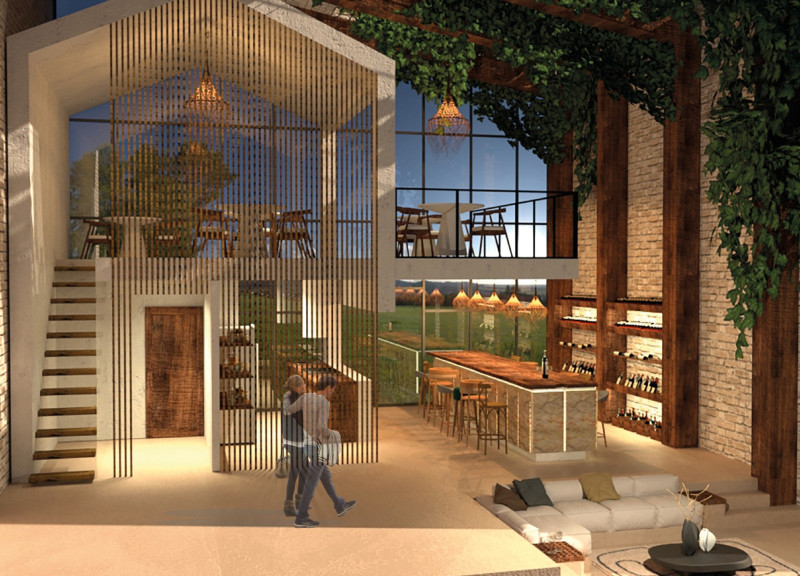5 key facts about this project
Tili Wine Guest House is located in a picturesque wine-producing area and is designed to provide guests with an engaging experience centered around the art of winemaking. The structure offers a journey through various stages of wine production, blending spaces for relaxation and social interaction. With five distinct zones, guests are invited to immerse themselves in the narrative of winemaking, enhancing their stay through thoughtful design.
Concept and Spatial Organization
The layout revolves around five key areas: Vendemmia (Welcome), Pigiatura (Conviviality), Fermentazione (Contemplation), Conservazione e Invecchiamento (Relax), and Imbottigliamento (Sharing). The journey begins at the welcome area, which creates an inviting entry for visitors. Following this, the convivial space allows guests to interact and engage with one another, fostering a sense of community that mirrors the traditional gatherings associated with grape pressing.
Interior Experience
The design’s contemplative elements are evident in the residential areas, which are purposefully oriented to the west. This orientation allows for striking sunset views, maintaining a strong connection to the surrounding landscape. Natural light fills the interiors throughout the day, offering a warm and welcoming atmosphere that enhances the overall experience for guests.
Materiality and Aesthetic
Material choices are central to the guest house's aesthetic and functionality. Traditional clay tiles, wooden beams, and cement are combined with ample glass. This selection promotes visual connections between the indoors and outdoors and allows natural light to illuminate the spaces. The combination of modern materials with the preserved parts of the original structure creates a balanced relationship between old and new, contributing to the overall character of the guest house.
Outdoor Integration
Special attention is paid to the outdoor areas, with a large swimming pool and small vineyard designed to encourage relaxation and enjoyment of nature. These elements connect the guest house to its environment, allowing visitors to fully experience the beauty of the area while engaging in leisurely activities.
A defining design detail is the extensive use of glass façades, linking the interior spaces to the landscape beyond. This design choice invites the surrounding scenery into the building, creating a brighter and more inviting atmosphere for guests as they move through the various areas of the guest house.






















































